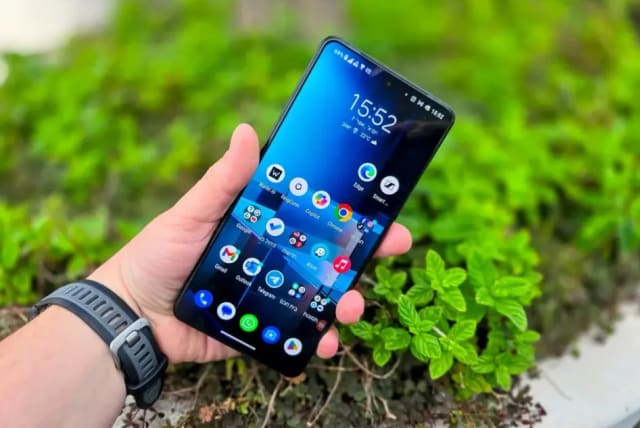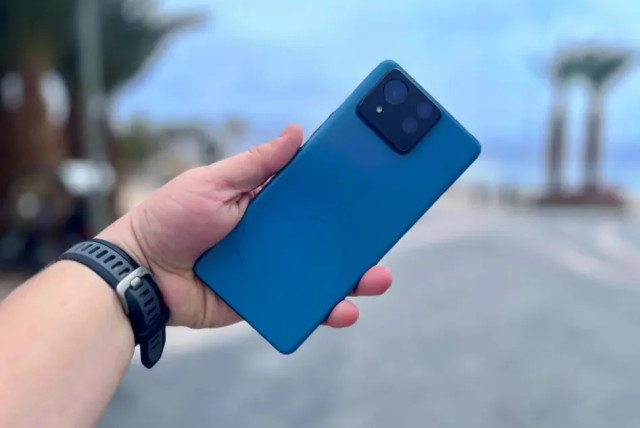Review: Zenfone 11 Ultra - Asus also wants AI

In the Zenfone 11 Ultra smartphone, Asus abandons small screens and switches to a large display like other manufacturers in the market.
Asus is another manufacturer (after Samsung) integrating AI capabilities into its smartphone. It seems Asus understood from the launch of the Galaxy S24 Ultra that it cannot be different and it needs AI capabilities in its new smartphone. Therefore, it announced that it integrates various capabilities into its new device that add to the user experience, the problem being that these are not available to users at all, but will only come in a future update.
Interface: Zenfone 11 Ultra - AI capabilities and call recording
Although these are capabilities that will only arrive in the future, Asus has integrated them into the unit sent to me for review, so that they can be appreciated. The features are very similar to those already existing in Samsung, for example, transcription and summarization of calls in English, French, German, Spanish, Italian, and more (not in Hebrew). In those languages, it is also possible to get real-time translation during phone calls (translation of both sides to their own language).
Asus integrated a semantic search engine in the device's gallery, a technology that can search for content that matches the meaning of the word. You can write in the gallery tree, baby, beach, or location, and the search engine will display the pictures containing that content. This is a similar capability to what exists in Google Photos, but it's nice to have it in the smartphone itself and not as a cloud service.
Other AI features include improved noise filtering during calls (also through third-party applications) and wallpaper creation. Here, you can choose from a number of topics: space, science fiction, nature, urban landscape, and more. Then, you choose the type of background, for example, in an urban landscape, you can choose a beach, urban landscape at sunset, architecture, and then determine several elements for the final creation of the wallpaper. It's not exactly an AI tool for creating images like Copilot or Imaginary, but it's nice.
The device's operating system is Android 14, with Asus's interface, which offers call recording, the GlideX app that allows wireless file transfer between the smartphone and computer wirelessly, including to Mac, and also a side menu that allows quick access to various applications.
Asus offers two updates to its operating system and four years of security updates. It's not much compared to competitors.
Design: Zenfone 11 Ultra - Honey, the smartphone has grown
Asus has always tried over the years to distinguish itself in the smartphone market with relatively small screens and a device suitable for one-handed use. That's not the case with the Zenfone 11 Ultra, which has a larger screen and a well-felt weight - 224 grams.
The device's back is designed with a look similar to that of the company's laptops, straight stripes crossing it and a glossy coating, but one that fingerprints don't stick to. The device comes in four colors: blue, black, silver, and even champagne gold. The frame is made of recycled aluminum and the device is water-resistant to IP68 standard, which means immersion in water up to a depth of 1.5 meters for 30 minutes.
Screen: Zenfone 11 Ultra - The large screen makes the difference
Asus has tried for a long time to ride the niche of small screens, but it seems that the wider audience prefers the large screens of competing manufacturers. While the Zenfone 10 came with a 5.92-inch screen, the new model boasts a large 6.78-inch screen with sharp and successful display quality. It's a screen that comes with the popular and quality AMOLED technology, a dynamic refresh rate of 120Hz for smooth motion in the interface (LTPO screen technology), strong lighting that peaks at 2500 nits and 1600 nits during regular use, so I had no problem working with it in strong sunlight. The screen itself includes Gorilla Glass Victus 2 type resistant glass, like competing smartphones, but at the price of this model, you could have asked for - Gorilla Victus.
Hardware: Zenfone 11 Ultra - A lot of memory
The hardware Asus integrated here leaves no room for disappointment, it's a fast smartphone with lots of memory and storage capacity. The processor here is a star of flagship devices - Snapdragon 8 Gen 3 that comes with a lot of RAM, more precisely 16GB, and also a storage capacity of 512GB.
Asus offers here good stereo speakers and surprisingly includes audio jack - 3.5mm. A connection that is rare to find nowadays in smartphones. In addition, the fingerprint sensor under the screen responds well, there is support for WiFi Calling which for some reason on the Partner network didn’t work for me consistently, and support for dual SIM cards. There is no support for eSIM here, which is a shame.
Camera: Still not at flagship device level
The device comes with a triple sensor camera array: a 50-megapixel main sensor with 6-axis stabilization, a 32-megapixel telephoto sensor with 3x optical zoom and optical image stabilization, and a 13-megapixel wide sensor. It's a successful camera, but not excellent as it should be in a flagship device. Generally, I received good photos when lighting conditions were close to perfect, but it's hard to say when the lighting was slightly dim, even in the light of evening hours. Also, sometimes there was a feeling of excessive processing, especially when shooting with zoom. In portrait/bokeh shots where the background is blurred, the camera did not fail and managed to distinguish well what the main object was without accidentally blurring the hair of the person being photographed.
The selfie camera - 32 megapixels is not bad, but it struggles to produce good photos if they are not in good lighting conditions.
Battery - Removing the charger in 2024 is not a bold step.
In the device's launch video, the company representative refers to removing the charger from the package as a bold step. It's hard to see this as a bold step, after most manufacturers have already made this move, which mainly annoys consumers and does not allow taking advantage of the device's fast charging directly from the box. The smartphone supports wired charging of 65 watts. Asus added here also wireless charging of 15 watts and reverse charging, for charging other devices from the device's back cover - 10 watts.
The integrated battery here comes with a large and non-standard capacity for a flagship device - 5500mAh. The battery lasted me from around 7 am to midnight, and I still had 41% energy left.
Price: NIS 4,000.
In conclusion, Asus can expand its audience with the Zenfone 11 Ultra, mainly thanks to the large screen. It has strong hardware, successful battery, and AI capabilities. On the other hand, the camera is not at the level of a flagship device and the price is high.
Jerusalem Post Store
`; document.getElementById("linkPremium").innerHTML = cont; var divWithLink = document.getElementById("premium-link"); if (divWithLink !== null && divWithLink !== 'undefined') { divWithLink.style.border = "solid 1px #cb0f3e"; divWithLink.style.textAlign = "center"; divWithLink.style.marginBottom = "15px"; divWithLink.style.marginTop = "15px"; divWithLink.style.width = "100%"; divWithLink.style.backgroundColor = "#122952"; divWithLink.style.color = "#ffffff"; divWithLink.style.lineHeight = "1.5"; } } (function (v, i) { });

